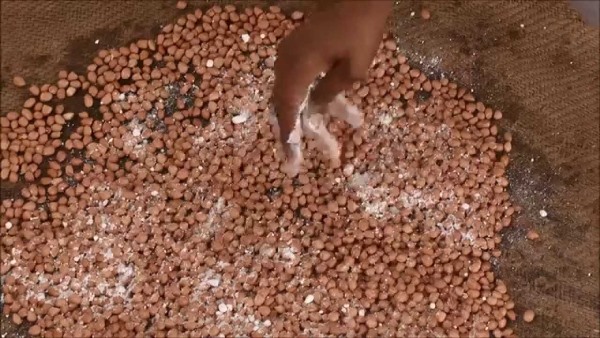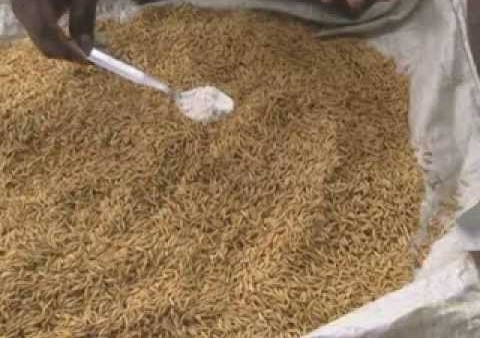Seed Treatment Information:
The following information is about seed treatment for any agricultural crop.

Seed Treatment and Its Importance:
Well, why we need the treatment of seeds before sowing any crop? Because we require healthy, (disease free) and high yielding crop. Even though we select quality seeds, it is advised to go through the seed treatment process for better germination and to prevent from seed and soil borne diseases. Seeds can be treated with chemicals or natural bio-products. In the following write-up, let us discuss more seed treatment process along with various crops.
Advantages of Seed Treatment:
The following are major advantages of seed treatment.
- This process protects germinating seeds and seedlings against soil and seed-borne pests and diseases.
- It improves the germination process and increases the germination percentage.
- It enhances the seed viability and vigour which are the two most important factors in agriculture or cultivation practices.
- It results in the early and uniform establishment and growth of the crop or plants.
- It enhances nodulation in legume crops.
- It is better when compared to soil and foliar application in the crop.
- It results in uniform crop stand especially in adverse situations like low moist and high most conditions.
Read: Organic Potato Farming.
Seed Treatment Methods:
The treatment of seeds can be carried out in 3 different methods; Seed dressing, Seed coating and Seed pelleting. Let us discuss these seed treatment methods in detail.
-
Seed Dressing:
- The most common method of seed treatment is seed dressing. In this method, the seed should be dressed with either a dry formulation or wet treated with a slurry or liquid formulation. Dressings should be applied at both farm and industries. In this process, seeds should be spread on a polyethylene sheet and required quantity of chemicals should be sprinkled on seeds surface and mixed mechanically by the farmers.
-
Seed Coating:
- Usually, this is done by industries with advanced treatment technology.
-
Seed Pelleting:
- This method is being used for changing the physical shape of the seed to enhance palatability. As this process requires sophisticated seed treatment technology, it is being considered as the most expensive application.

Seed Treatments for Various Crops:
The following table explains about seed treatment for various agriculture crops.
Note: In case of seed dressing, use metal seed dresser or polythene bags or earthen pots.
| Sugarcane: Root rot. Wilt.
Rice/Paddy: Root rot. Bacterial sheath blight. Root-knot nematode. White tip nematode. Other insects/pests.
Chillies: Anthracnose spp. Damping off. Seed treatment with Trichoderma viride 4 grams/kg seeds, Carbandazim @ 1 gram/100 grams seeds. Soil-borne infection of fungal disease.
|
| Pigeon pea:
Wilt, Blight and Root rot Trichoderma spp. @ 4 grams/kg seed. Pea Root rot Seed treatment with
White rot
Lady Finger (Bhindi) /Okra Root-knot nematode
Tomato: Soil-borne infection of fungal disease. Early blight. Damping off. Wilt.
Coriander/ Cilantro: Wilt Trichoderma viride @ 4 grams/kg of seed. Brinjal/Eggplant Bacterial Wilt
Leguminous Vegetables: Soil-borne infection Carbofuran/Carbosulfan 3% (w/w). Nematode Trichoderma viride @ 6 grams/kg of seeds. Sunflower: Seed rot
Jassids, Whitefly.
Wheat: Termite
Bunt/False smut/loose smut/covered smut.
Cabbage/Cauliflower/Broccoli/Knol-Khol/Radish: Soil/Seed-borne diseases (Damping off). Root-knot nematode.
Green Gram/Red Gram/Black Gram: Wilt and damping off.
Potato: Soil and Tuber-borne diseases.
Barley: Loose smut. Covered smut. Leaf stripe. Termite.
Capsicum: Root-knot nematode.
|
For Sheep Farming: Read here.
Hi I’m interested in sunflower faming please I will appreciate your kind attention to walk me through with basic information regarding the farming and ofcouse other crops in general to enable high yield.